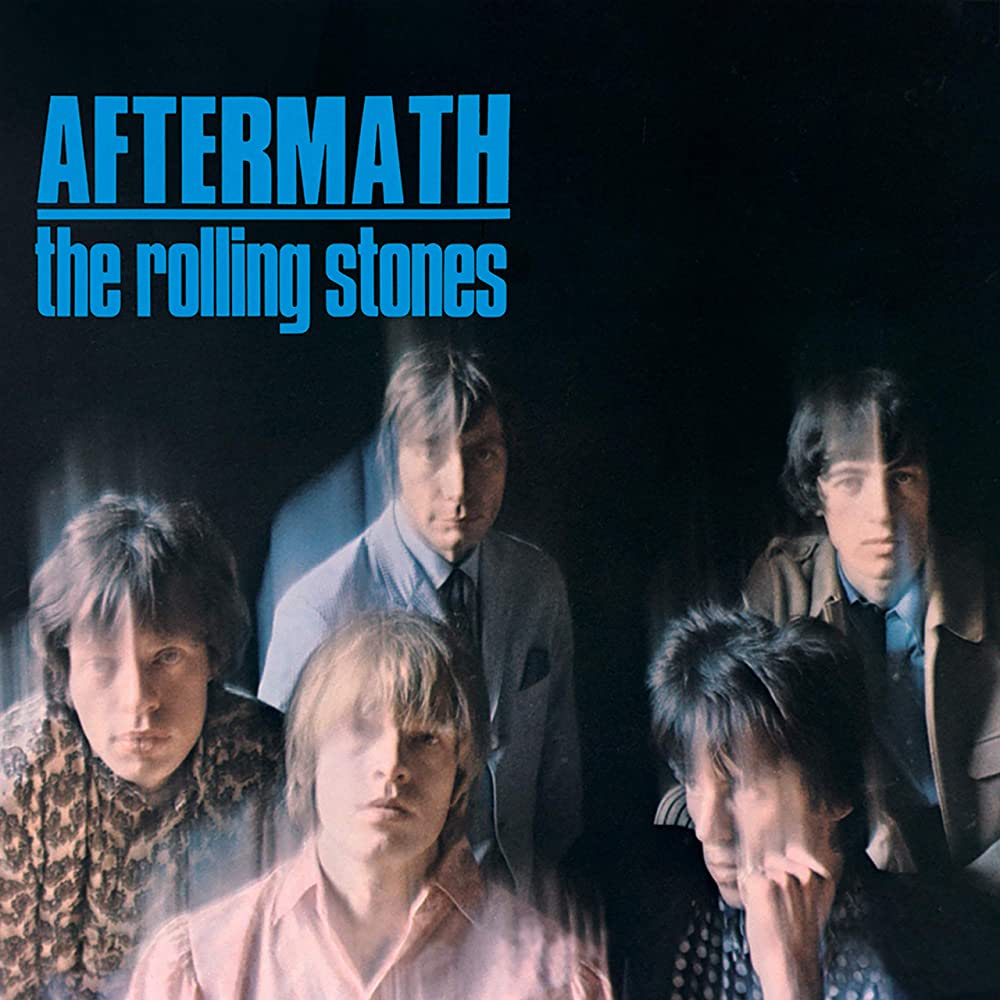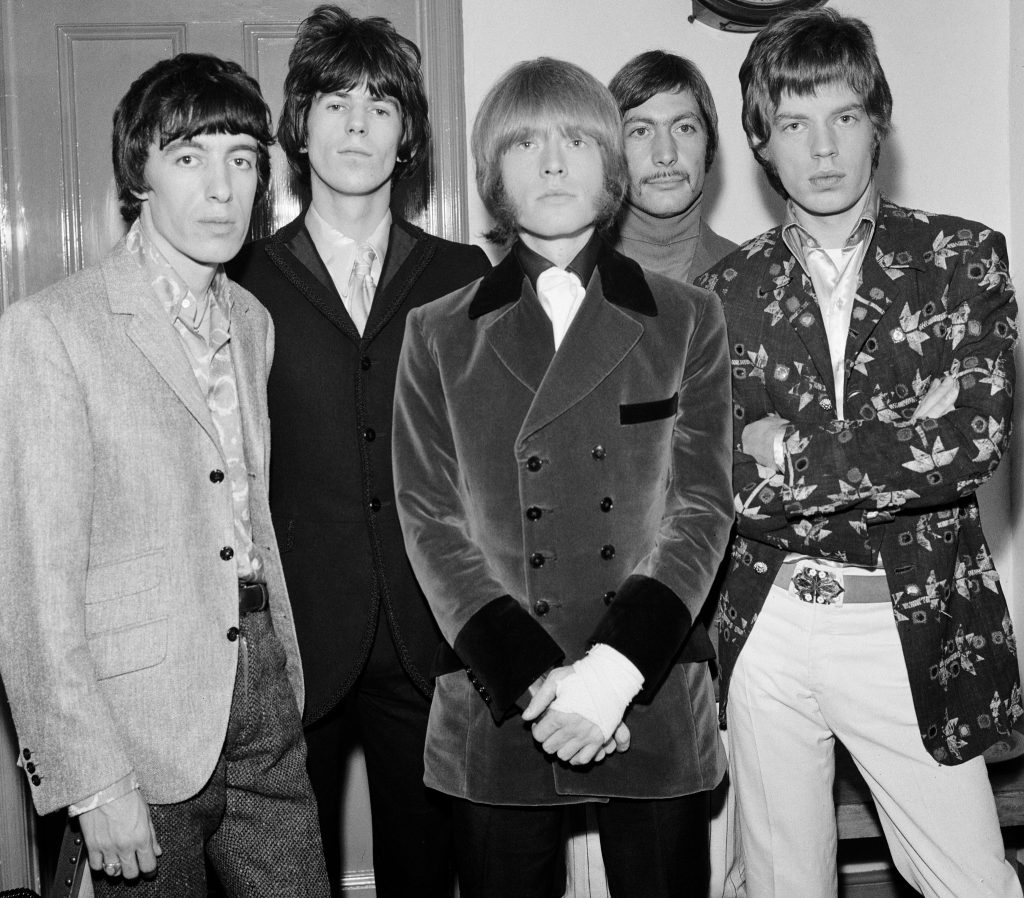
In 1966, the Rolling Stones, already considered the enfants terribles of rock, were about to take a bold turn in their career. That year, the psychedelic wave, led by the Beatles with their album “Revolver”, overwhelmed the music scene and prompted the Stones to explore new horizons.
The beginning of 1966 saw the release of the album “Aftermath”, which already showed signs of artistic evolution. Signature songs such as “Paint It Black” and “Under My Thumb” combined catchy riffs with a touch of the exotic. The Rolling Stones were no longer content with the simple rock'n'roll that had propelled them into the limelight; they were now flirting with more daring arrangements and hypnotic melodies.

The same year, the influence of drugs on the band also became more prominent. Brian Jones, the enigmatic guitarist, succumbed to the charms of acid and gradually drew the other members into this world. This plunge into artificial paradise had a considerable impact on their music: the sounds became more complex, the experimentation more daring and the lyrics more mystical.
1966 also marked a turning point in the private lives of the band members. Their antics and scandals, widely reported in the press, reinforced their sulphurous image and helped differentiate them from their competitors, notably the Beatles. The Rolling Stones were more than ever perceived as the rebels of rock, an image they cultivated with malice.
At the end of the year, the band went into the studio to record what would be their first foray into psychedelic music: the album “Their Satanic Majesties Request”. Heavily influenced by The Beatles' “Sgt. Pepper's Lonely Hearts Club Band”, the album's confusing sound experiments were met with mixed reviews. Although it was not as successful as their previous work, the album was a testament to their daring and desire to push the boundaries of their art.
The Rolling Stones in 1966 were thus in the midst of a transformation, both artistically and personally. The year was marked by risk-taking, psychedelic influences and provocation, forging the band's unique and timeless identity. The Rolling Stones have definitely not finished surprising.
The Aftermath album
This fourth opus is considered a milestone in their discography, marking a real musical revolution. Between experimentation, affirmation of their style and exploration of new sounds, the Rolling Stones engraved the indelible imprint of their talent on vinyl.
From the very first notes of the album, one can perceive the break with their previous works, mainly composed of covers of blues and rock'n'roll songs. “Aftermath” is the first Stones album written entirely by Mick Jagger and Keith Richards, their creative duo asserting themselves with original, complex and ambitious compositions. The tracks “Paint It Black”, “Under My Thumb” and “Lady Jane” show their ability to go beyond the boundaries of rock to explore unexplored musical territory.
The album is also marked by instrumental experimentation. Brian Jones, the band's versatile guitarist, showcases his talents as an instrumentalist, bringing an exotic and original touch to the songs. He brilliantly juggles sitar, marimba, dulcimer, organ and many other instruments, creating a unique fusion of rock, blues, oriental music and baroque sounds.
The success of “Aftermath” is also due to its rich lyrics. The Rolling Stones took a stand, displaying their rebellious and libertarian spirit through provocative and sometimes controversial lyrics. The album reveals a band that is committed and willing to shake up established codes, both artistically and socially.
The impact of “Aftermath” was immediate, propelling the Rolling Stones to the top of the world charts. If the Beatles were the undisputed masters of pop, the Stones were now the ambassadors of a daring and avant-garde rock, in constant evolution. Their songs were taken up by a whole generation, perfectly illustrating the zeitgeist and the effervescence of the counter-culture of the 1960s.
With “Aftermath”, the Rolling Stones prove that they are much more than just heirs to the blues and rock'n'roll. They imposed their style, at once wild, romantic and provocative, and redefined the contours of rock for the years to come. This must-have album will forever be remembered as the manifesto of a band in full metamorphosis, ready to conquer the world and set the stage on fire with their revolutionary music.
The Paint It Black song
The Rolling Stones' anthem “Paint It Black” is a seminal song and an integral part of the rock pantheon. Released in 1966, this song with its dark lyrics and heady melody is one of the band's most iconic. Here's a look back at a song that is both haunting and complex, a reflection of a tumultuous era.
From the very first notes, “Paint It Black” is distinguished by the use of an instrument rarely associated with rock music: the sitar. Borrowed from Indian music, this plucked string instrument brings a touch of exoticism which, combined with rock'n'roll, forms a unique and daring mix. It is thanks to Brian Jones, guitarist of the Rolling Stones and great explorer of new sounds, that this oriental fusion comes to life.
The sitar, the star instrument of “Paint It Black”, is not the only element that makes this song unforgettable. The lyrics, written by Mick Jagger and Keith Richards, are abysmally dark. The lyrics evoke a sense of grief and despair, a desire to erase all colour and make way for total darkness. This dark aspect contrasts with the overflowing energy of the melody, creating an atmosphere that is both haunting and unsettling.
The rhythm section is led by Charlie Watts and Bill Wyman. The almost military drums and the sustained bass contribute to the urgency and palpable tension that characterise “Paint It Black”. The song is like a whirlwind of emotions that sweeps the listener along in its wake.
The impact of “Paint It Black” on the music scene is undeniable. The Rolling Stones proved here that they were capable of innovating and venturing off the beaten track. This song will influence many artists to come, as much for its addictive melody as for its daring and non-conformist character.
“Paint It Black” is the symbol of an era where musical barriers were shattered and artists did not hesitate to merge genres. In 1966, the Rolling Stones gave the world a timeless song that continues to dazzle and haunt people to this day. A cornerstone of rock, it reminds us why the Stones are and will remain a legendary band.
Many artists have covered this song, let's pinpoint Ministry's cover in 2010.